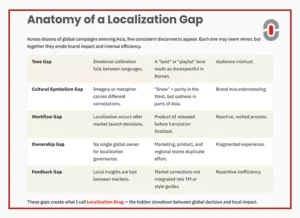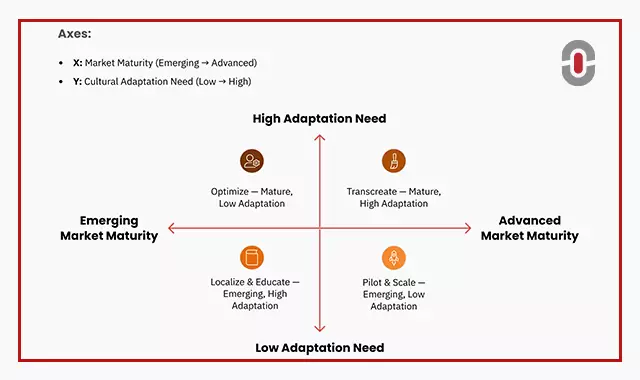1-StopAsia Market Intelligence Paper | Volume 1 of the Asia Growth Architecture Series
Executive Summary
Global brands rarely fail in Asia because of product quality. They fail because of context.
In markets shaped by collectivism, hierarchy, and linguistic nuance, Western-style campaigns often lose momentum after launch. The tone that signals confidence in English can sound aggressive in Japanese. Humor that drives engagement in the West may read as confusion or irrelevance in Korea or Vietnam.
This paper explores the five recurring localization gaps that slow down brand growth across Asia — and offers a foresight framework that helps enterprises anticipate and correct them before market entry.
Based on over 25 years of experience working with global brands, 1-StopAsia gave me a good ground for a structured view of what separates successful market entry from campaigns that lose resonance after the first impression.
Key Takeaways
- Localization failures are rarely linguistic; they’re systemic.
- Cultural sensitivity isn’t intuition, it’s an operational competency.
- Market readiness depends on when localization enters the process, not just how it’s done.
Introduction into the topic:
The Myth of Global Messaging
 “Global campaign” is often used as a synonym for “universal message.” In practice, it’s anything but.
“Global campaign” is often used as a synonym for “universal message.” In practice, it’s anything but.
What works in London or Los Angeles can feel tone-deaf in Seoul or Bangkok. A tagline that reads “Be Bold” in English might carry undertones of arrogance in cultures that prize humility. “Empower Yourself” may sound self-centered in regions where community identity is stronger than individualism.
The issue isn’t translation, it’s contextual intent.
When global teams focus on textual accuracy rather than emotional equivalence, localized campaigns begin to drift. The words may be correct, but the message feels off. And once brand trust slips, it’s very hard to rebuild.
“The friction isn’t linguistic, it’s cultural subtext.
True localization starts by translating intent, not syntax.”
Localization is therefore not a finishing step after copy approval. It’s an interpretive discipline that shapes how the brand is perceived from the first interaction.
